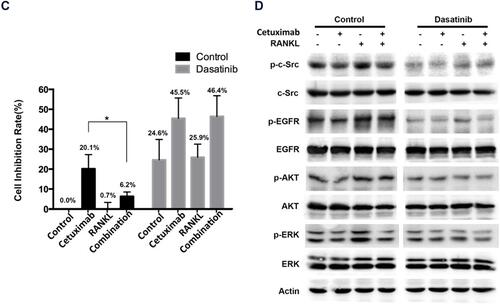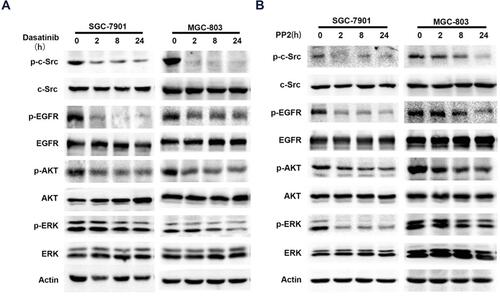Zhang X, Song Y, Song N, et al. Onco Targets Ther. 2017;10:73–83.
In a detailed re-analyses of the data post-publication, the authors found the incorrect images were used for on page 80. Due to an error at the time of figure assembly the images from was used as a placeholder and not replaced later. The correct is shown below.
The authors apologize for this error and state that this does not change the scientific conclusions of the article in any way.
Figure 5 The effect of dasatinib on RANKL-induced cetuximab resistance in SGC-7901 cells.


